
By Renée Tillotson
I’d like to tell you a story of compassion. It might seem to be a story of one person coming to heal or rescue another. Let’s see what we think by the end, especially when we see how a village of formerly homeless folks are working together to support fire victims on Maui.
“Compassion is not a relationship between the healer and the wounded. It’s a relationship between equals.” – Pema Chödrön
One of our story’s characters was called Auntie Charlotte – or at least that was one of the aliases she went by. Cliff and I recently attended her memorial service at Hui Mahi’ai ‘Aina in Waimanalo. This kauhale, or village of mini-homes, is for people transitioning out of homelessness here on O’ahu.
Many people at the service spoke fondly of a tiny, peppery woman who lived quite the wild life. I think by “wild” I truly mean untamed, never allowing herself to be put onto the track that society would like to have etched out for her. I heard folks use the term ‘kolohe’ – rascally – more than once about Auntie Charlotte at her memorial, always with a grinning shake of the head!
One of Auntie Charlotte’s nieces who came to the memorial and who talked story about her had quite a “tough guy” presence herself – I mean, I wouldn’t want to run into her in a dark alley. The niece joked about Auntie Charlotte and herself often trading places, with each of them regularly going in and out of jail for a variety of infractions. And according to others in attendance, Charlotte could swear like a sailor – as we older folks used to say – and she really liked smoking her pakalolo, as a couple examples of her salty character.
Now the other main character in the story – which actually has a whole cast of characters – is a beautiful, well-spoken younger woman named Brooke. At the time when our two lead characters met, Charlotte was an emaciated old woman alone in a wheelchair on the streets of Honolulu, without a penny in her pocket… without even a pocket… or even a stitch of clothing that might have a pocket.
Brooke was then Assistant to the Lieutenant Governor of Hawai’i, now Governor of Hawai’i. Brooke had spent a great deal of time seeking big-level solutions to the challenges of homelessness. She had played an important part in the creation of this little village, Hui Mahi’ai ‘Aina.
We can see that these two women, Charlotte and Brooke, held very different roles in life. We even think we can see who is going to be the savior and who will be the saved. But listen carefully to the story from Brooke’s point of view.
To all of us gathered at picnic tables under tents at Charlotte’s memorial at the kauhale, Brooke described their first meeting:
“I first met Auntie Charlotte in Chinatown. I saw these big wide eyes staring at me – and it was Auntie. She had carved out a little bit of shade against a wall. The shade was only this deep, and she was just in it, barely.
“I didn’t know she was a woman at first, I thought she was an old man without a shirt, and I just could not take my eyes off of her. I got out of the car and walked over to her.
“She was trying to pull herself, wheel herself, into the shade, because the sun was starting to beat down on her. I said, ‘Oh…ah…Auntie…’ seeing she was not an uncle. ‘Auntie, are you OK?’ She couldn’t really talk, she was so parched, so thirsty. I said to my wife, Jess, ‘Get water. We need water.’ So Jess went and brought water.
“I gave it to her, and I said, ‘Auntie, there’s a place for you in Waimanalo. There’s a beautiful angel there, Auntie Blanche, and she has lots of kupuna there like you. You want to go there, Auntie? We’ll take you right now.’
“Big wide eyes look at me, and she nods her head in a big ‘yes’ [the audience murmurs touched ‘awwwh’s’]. I called Jim, the paramedic and chief ambulance driver, and said, ‘Jim, you know we talk all the time about building tiny house villages, and I have a woman on the street who must be about 80 right in front of me. And she wants to go to Auntie Blanche’s, so let’s take her while she says yes.’ So an ambulance shows up and brings her here to Auntie Blanche’s place.
“And when she got here, she saw familiar faces from the street. That’s when I knew that bringing her here to Hui Mahi’ai ‘Aina was the right thing to do.”
My husband, Cliff, has spent a lot of time working with Auntie Blanche and the residents living at Hui Mahi’ai ‘Aina. He tells me Charlotte’s transformation when she arrived at the tiny house village was rapid and remarkable. Here she was safe, she had plenty to eat, clothes to wear, a place of her own to live in, and – most importantly – people who cared about her. Like a dry desert that springs into bloom after a monsoon, Charlotte blossomed. She walked again and she shed about 20 years in appearance. She even took her place helping with tasks in the community, such as serving meals and helping with the food bank.
Within months, however, Charlotte’s hard life seemed to catch up with her. Auntie Blanche took her for medical care, only to discover that Charlotte had terminal cancer. Without flinching, Auntie Blanche brought Charlotte right back to her tiny house with assurances that she and the residents would give her the best care they could until the end.
And they did.
Brooke came to visit and got reports of Charlotte’s progress. In her final weeks, Charlotte was surrounded by a hui – a small group – of women in the village who took turns caring for Charlotte around the clock. It sounded at the memorial as if Charlotte was not exactly an easy, accommodating patient. She had her cantankerous moments! Yet they shared a common bond, Charlotte was grateful, and she died peacefully in a circle of love. Each of her caretakers who nursed her in those final days spoke of the privilege they felt at having done so.
At the memorial, Brooke continued with her recounting of Auntie Charlotte’s story: “Some people were scared of this place when we started, right? They didn’t want it. They were worried it was going to bring an unsafe environment to the neighborhood. And it’s done the opposite. This is a place of safety, of people healing other people. And for me, finding Auntie Charlotte and bringing her here was the best thing I’ve ever done in my life. [Applause from audience, Brooke in tears] She gave that to me. She gave that to me.
“And what Charlotte did allowing us to care for her, helped us all lift up, right? Our purpose is greater because she helped us all give dignity and comfort to someone who deserved dignity when they were leaving this earth. And we all deserve dignity. For all of us, our time will come. Know that when your time comes, we will be here to honor you. And know that you will not be forgotten. And that’s what we have done for Charlotte.” [Applause]
Reflecting on Brooke’s sentiment, I feel as if Charlotte had opened within Brooke a vastness that Brooke did not know that she had. I would call that vastness compassion.
Brooke’s words reminded me of Meister Eckhart, a German Christian mystic, who wrote of God’s essential nature being to give. In order for God to give, He has to have a receiver. Eckhart went so far as to say that by receiving God’s love, we give God His divinity – a rather startling conclusion.
From Eckhart’s perspective, the same must be said of us. Let’s say that our true human nature is to be humane, to give of ourselves to others. That means that none of us can be givers without someone to receive our gifts.
So, between Auntie Charlotte and Brooke, who was truly helping whom? Many of those living on the street reject offers of help, and our spunky, stubborn Auntie Charlotte had refused contact with her family and turned down many offers of help over her lifetime.
But not this time, with Brooke.
This time Auntie Charlotte graciously – and I use the word “grace” here very deliberately – agreed to receive Brooke’s gift of help. In that sense, she allowed Brooke to be a giver in a bigger and more significant way than Brooke had ever been in her life. That was Charlotte’s gift to Brooke. And Auntie Blanche says that prior to meeting Brooke and coming to Hui Mahi’ai ‘Aina, Charlotte had never given anything to anybody.
As their eyes met on the street in Chinatown, Brooke felt no separation between the two of them. Charlotte made it possible for the vast compassion of Brooke’s heart to open and maybe unlocked her own compassion by allowing Brooke to help her.
They were equals.
As I am writing and as you are reading this letter, Auntie Charlotte’s fellow residents at the tiny house village are working fervently to collect, sort and palletize donations to fill two 20’ shipping containers for Maui fire victims. So, here are the folks who have spent years living on the streets of O’ahu, outcasts from society, now coming to the rescue of people on Maui who have suddenly lost their homes. We thought we understood who is a helper and who is a receiver, and now the tables have suddenly turned. I guess we’re all just human beings making it through life on this Earth together with a large dose of kindness.
“Compassion becomes real when we recognize our shared humanity.” – Pema Chödrön
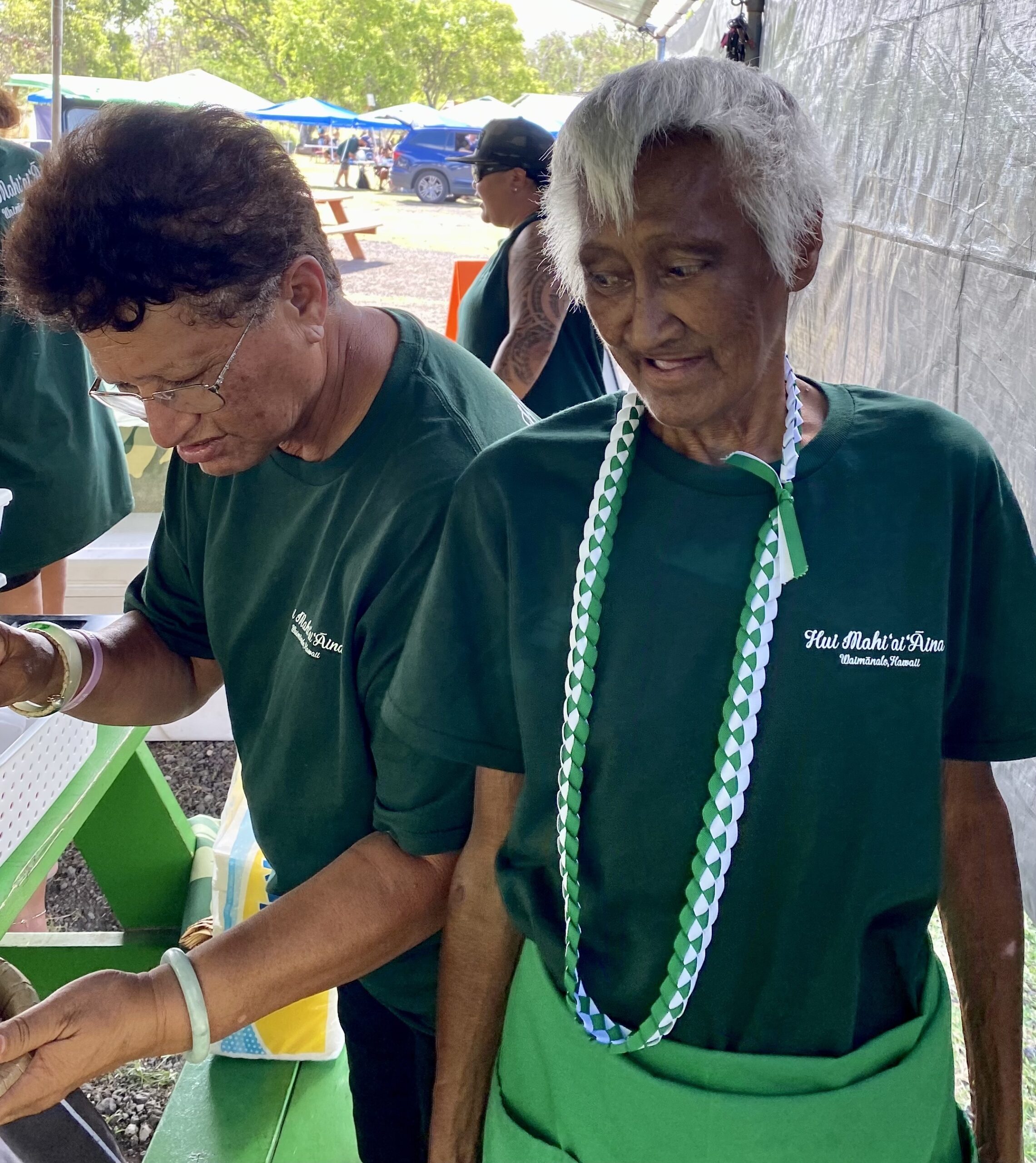
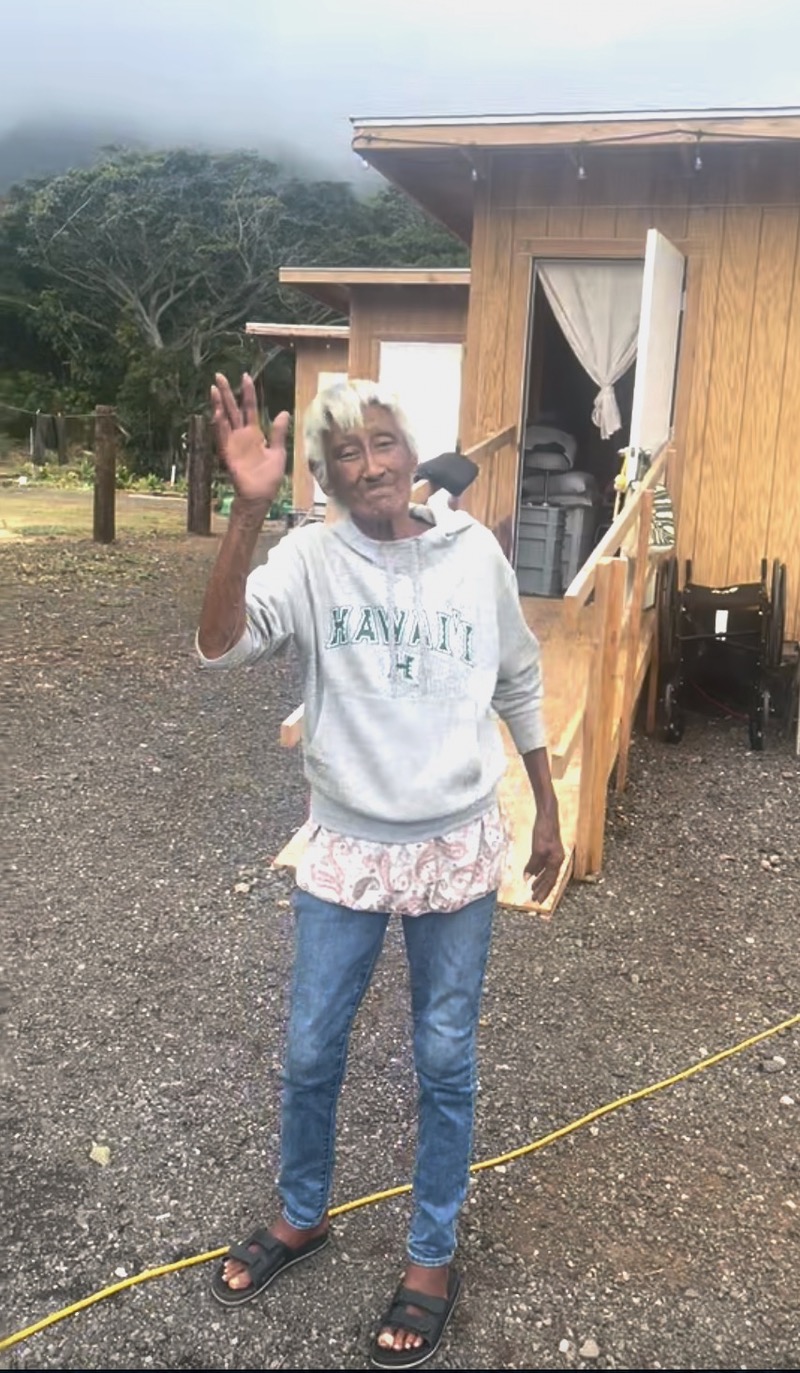
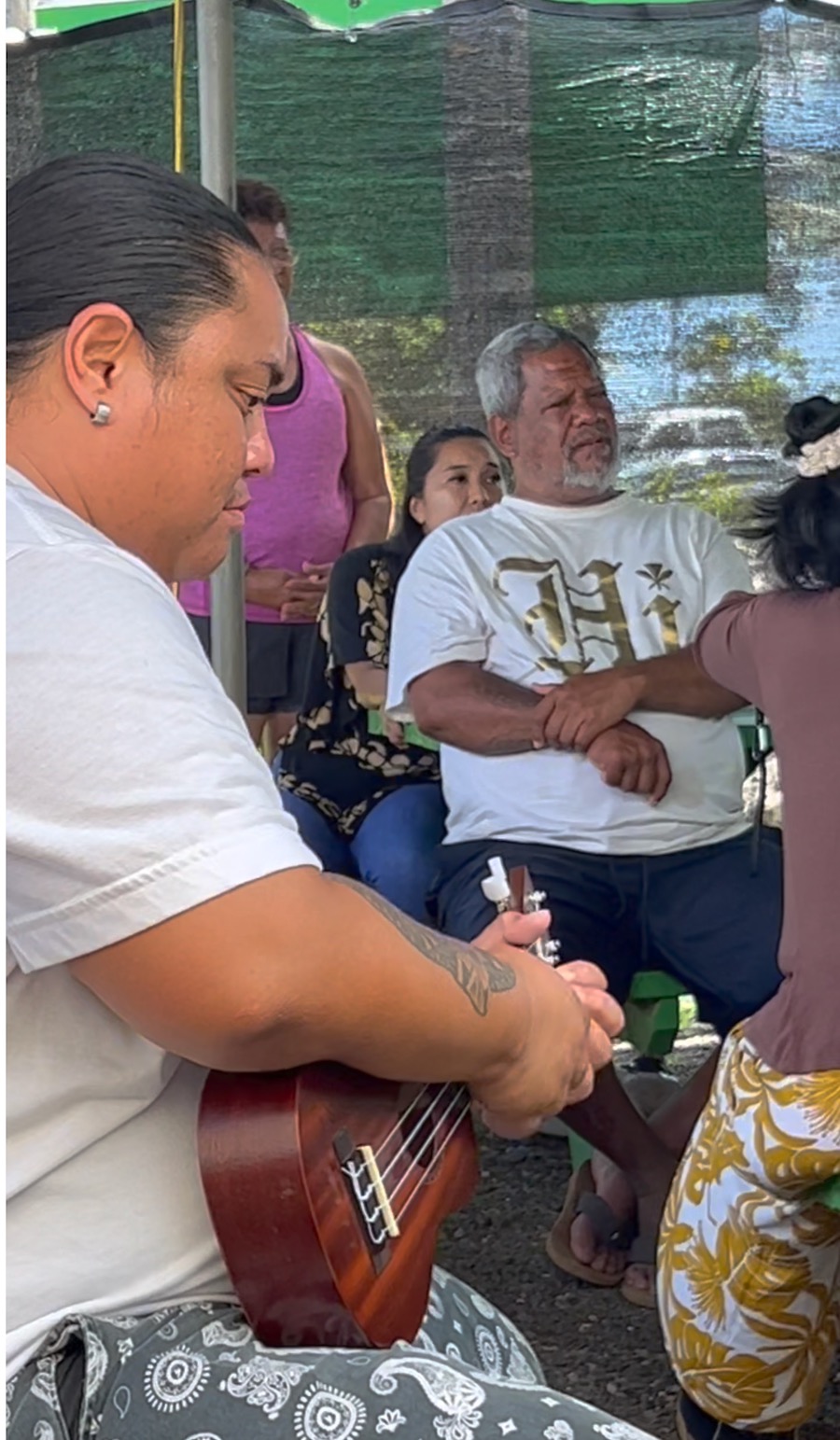
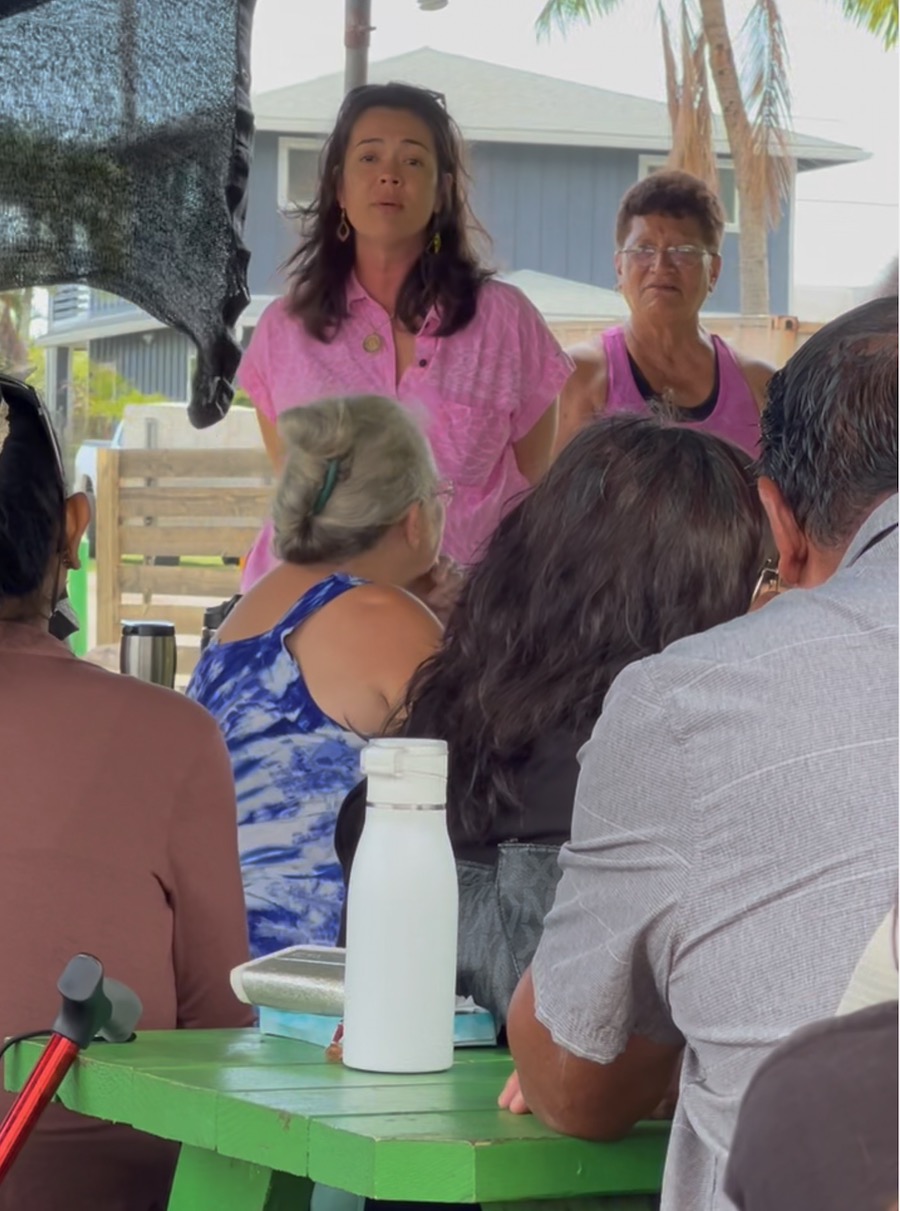
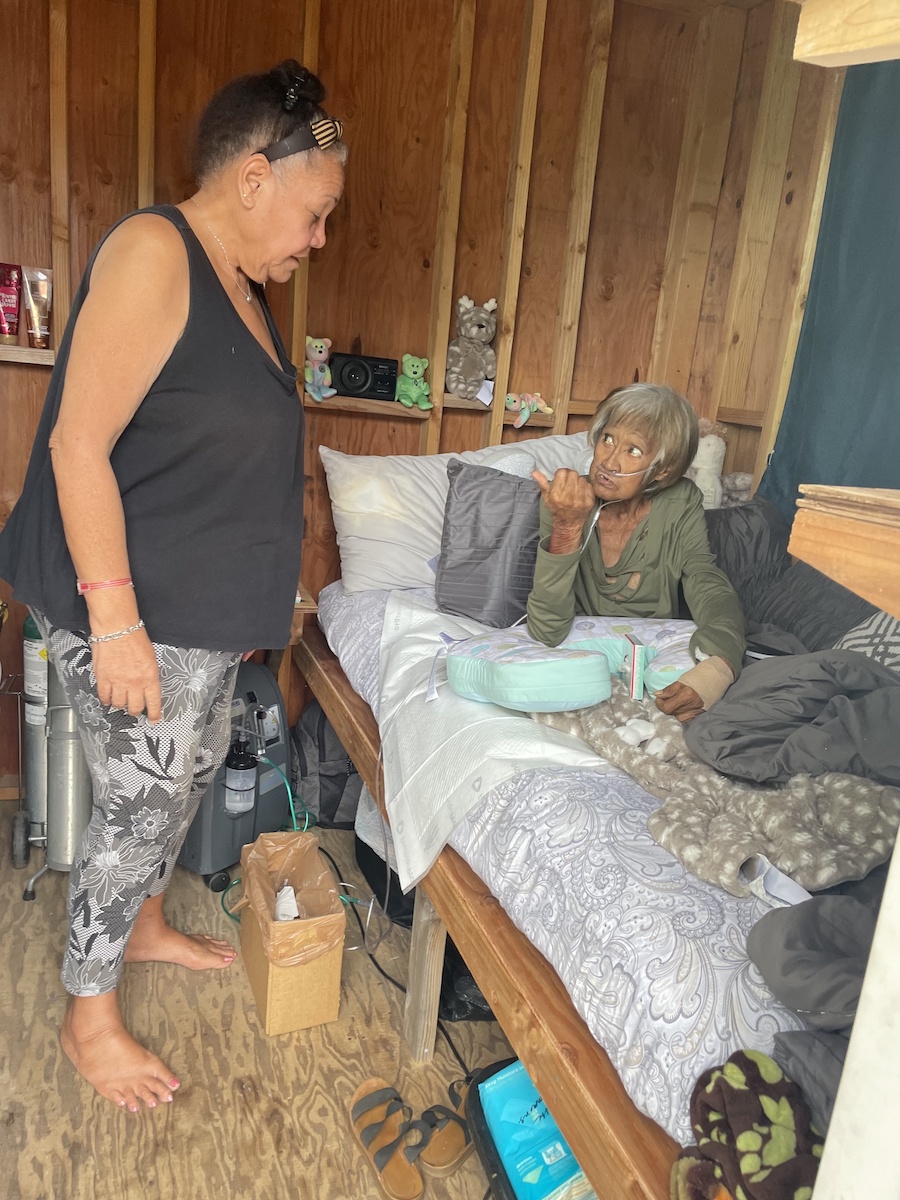
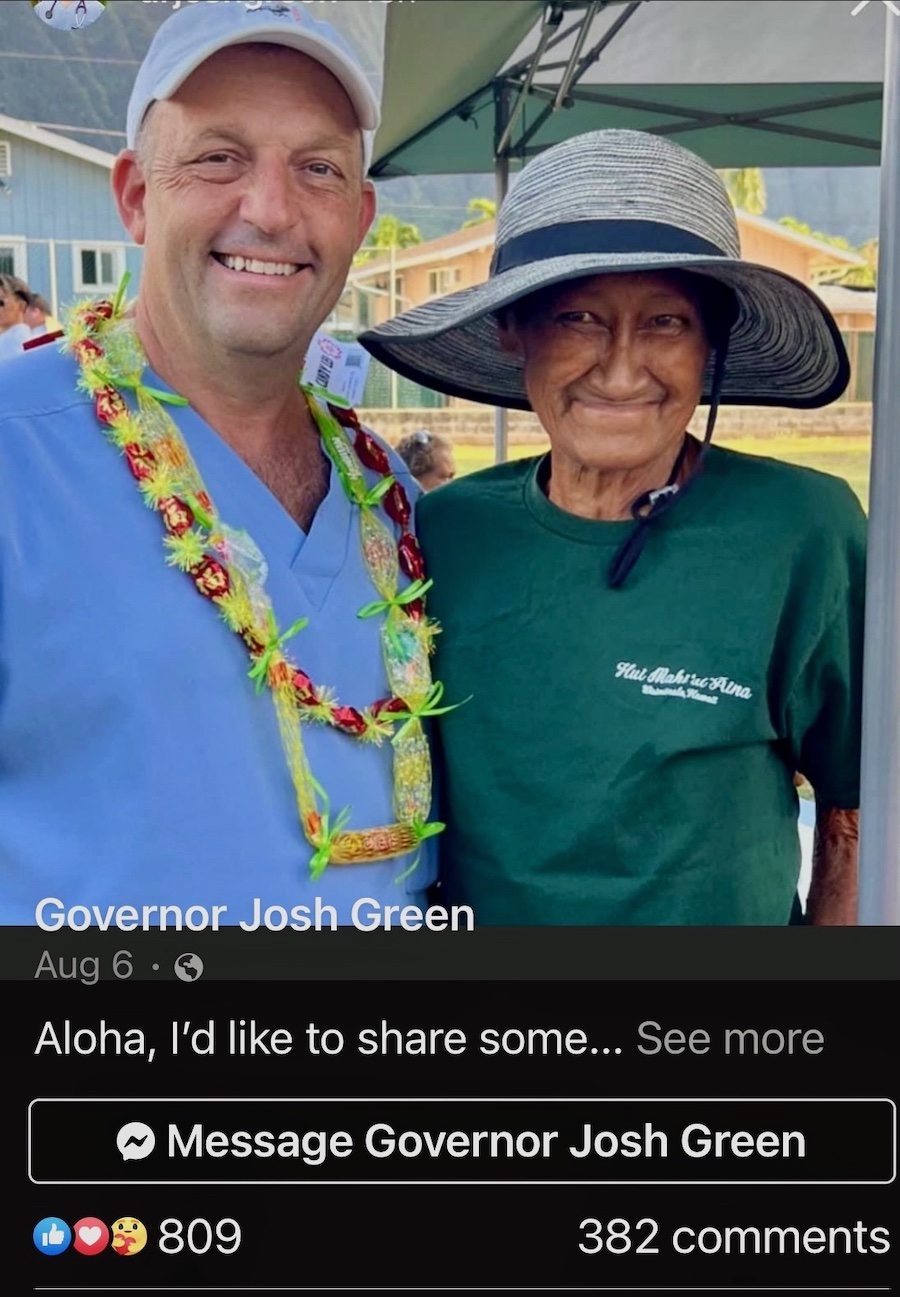
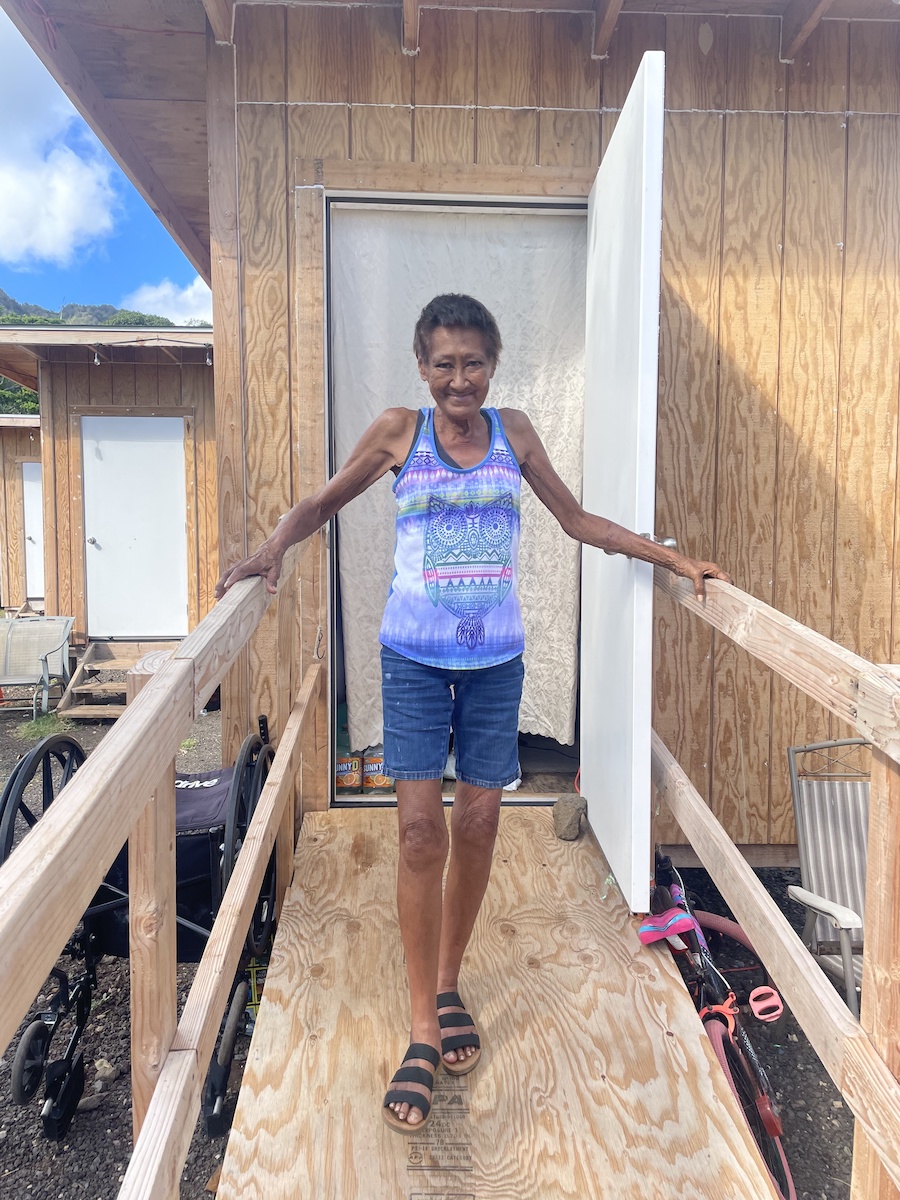
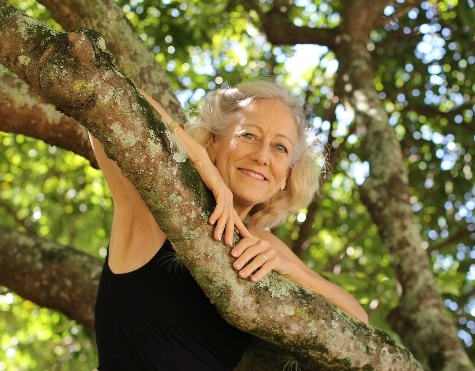
Renée Tillotson
Renée Tillotson, Director, founded Still & Moving Center to share mindful movement arts from around the globe. Her inspiration comes from the Joy and moving meditation she experiences in the practice of Nia, and from the lifelong learning she’s gained at the Institute of World Culture in Santa Barbara, California. Engaged in a life-long spiritual quest, Renée assembles the Still & Moving Center Almanac each year, filled with inspirational quotes by everyone from the Dalai Lama to Dolly Parton. Still & Moving Center aspires to serve the community, support the Earth and its creatures, and always be filled with laughter and friendship!

Get the Still & Moving App
This post is also available in: 日本語 (Japanese)

